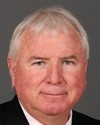Thanks.
Rapid fire, and in English again, so I can speak more quickly, regarding 5% PTSD, about the same number have a significant depressive issue. For the largest number of people with mental health disorders coming back from a mission, it's hazardous drinking behaviour, which I think runs at about 17% in the figures we have. There's some suicidal ideation—that is, thinking about suicide, not attempting—which is running between 2.5% and 3%, if my memory serves me correctly. And the rest did not reach the level of those kinds of severity of diagnosis. That's where the figures are.
Are they always given medication? No. The thing about a multidisciplinary approach is that we employ best practice for whatever their condition might be. Very often it's a psychotherapeutic approach, frequently accompanied by medication. In the case of post-traumatic stress order and the anxiety disorders, you want to calm down the anxiety a bit so that some of the thinking can get through, calm down the noise in your brain, but it's far from 100% of the time.
Some patients just refuse anyway. There are lots of people who don't like psychoactive medications and would rather not take it. So you have to have multiple approaches.
The other thing is support for the family. We've invented a really nice term called “member-oriented family focused care”—or is it the other way around?—to describe, when the member is having difficulty, how we provide some psycho-education to the family, teach them how to live with a person who has a mental health disorder, and involve them in the family therapy that goes on.
Remember, we can't treat the family in isolation. We can't treat just the wife. If somebody has lost a leg in Afghanistan but is otherwise fine, has no mental health issues, but the wife becomes depressed as a result, we can't treat her, not through my resources. We have to leverage other resources through CFMAP and the family resource centre to get her the care she needs through the provincial system.






